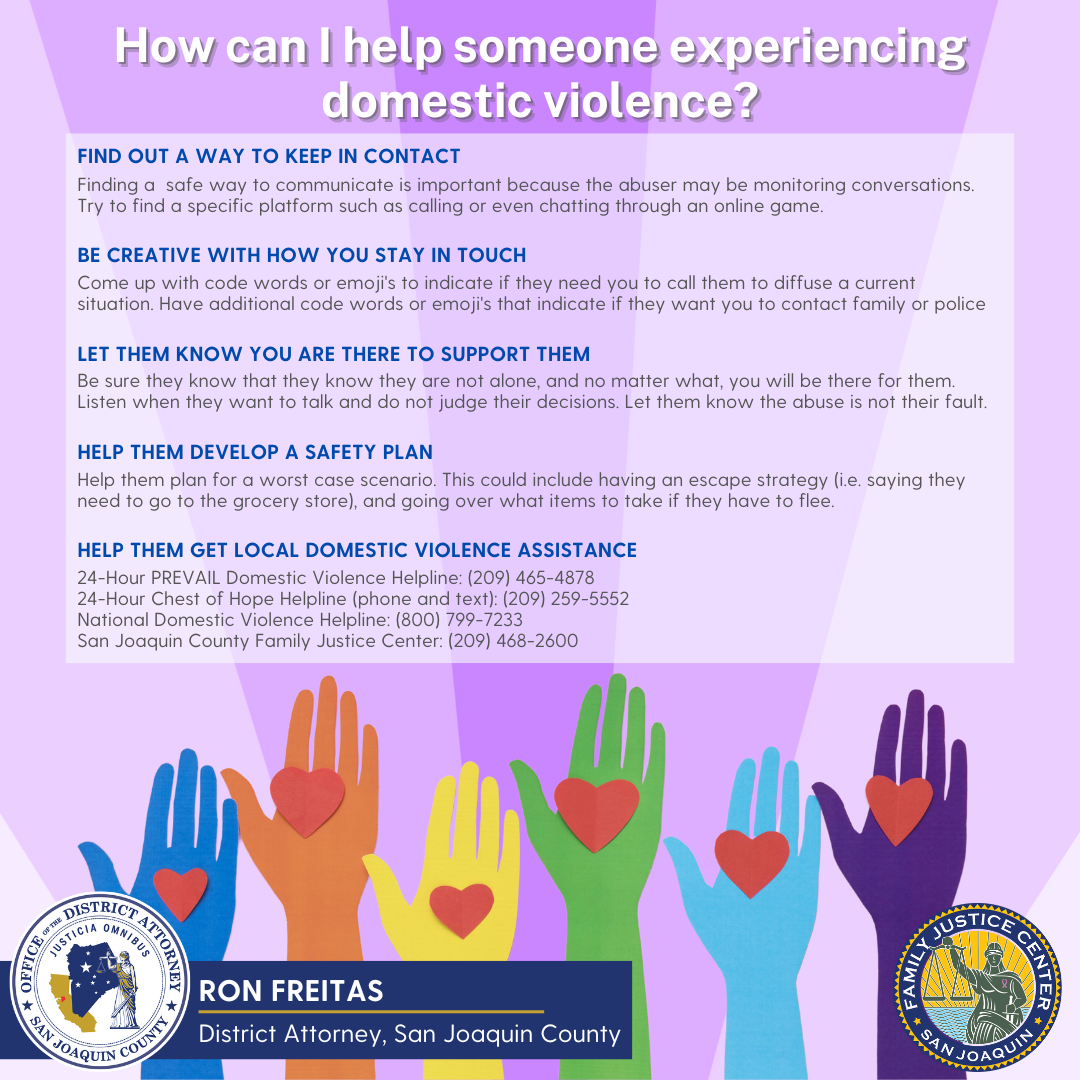
Ron Freitas
District Attorney
District Attorney
 If you are a victim of domestic violence, you are not alone.
If you are a victim of domestic violence, you are not alone.
Domestic violence is a serious and widespread problem that affects individuals, families, and communities. It is characterized by a pattern of abusive behavior used to gain power and control over another person, often in the context of an intimate or family relationship. Domestic violence can take many forms, including physical, sexual, emotional, and financial abuse.
Victims of domestic violence can be of any age, gender, race, or socio-economic background. Domestic violence can occur in any type of relationship, including marriage, dating, and same-sex relationships.
Domestic violence can have serious and long-lasting effects on the physical, emotional, and psychological well-being of victims. It can also have a ripple effect on the larger community, as it often involves children who witness the abuse and may be affected by it.
There are many resources available for individuals who are experiencing domestic violence, including hotlines, shelters, and support groups. It is important for victims to seek help and create a safety plan to protect themselves and their loved ones. It is also important for society as a whole to work to prevent domestic violence and support victims and survivors.
According to the National Coalition Against Domestic Violence, on average, 24 people per minute are victims of rape, physical violence, or stalking by an intimate partner in the United States. This equates to more than 12 million women and men who experience domestic violence every year.
If you or someone you know is experiencing or has experienced domestic violence, it is crucial to take immediate action to ensure safety:
A domestic violence safety plan is a personalized strategy designed to help individuals who are experiencing or have experienced domestic violence, including intimate partner violence, create a plan to enhance their safety and the safety of any children involved. Safety plans are tailored to the individual's unique circumstances and can provide guidance on how to respond during different stages of an abusive relationship.
If you would like assistance with completing your own Safety Plan, please contact the San Joaquin County Family Justice Center at 209-468-2600, or you can complete a Safety Plan online through the National Domestic Hotline.
Remember that creating a safety plan is an ongoing process. As circumstances change, you might need to adjust your plan accordingly.

If you would like more information, call Victim-Witness Services at
(209) 468-2500
or the Family Justice Center at
(209) 468-2600
If You or Someone You Know Is Being Abused:
Chest of Hope
Local 24-hour helpline
209-259-5552
Family Justice Center
A resource for victims of domestic violence and other forms of violence. If you or someone you know is a victim of domestic violence, please reach out to the FJC for help
209-468-2600
District Attorney Victim-Witness Services
209-468-2500
National Domestic Violence Hotline
1-800-799-7233
(TTY: 1-800-787-3224)
Multiple languages available.
Chat Online at: http://www.thehotline.org/
The hotline is answered by trained counselors
24 hours a day, 7 days a week. It is confidential and referrals may be provided for services in every region of the County. Staff can provide support, education, and safety planning.